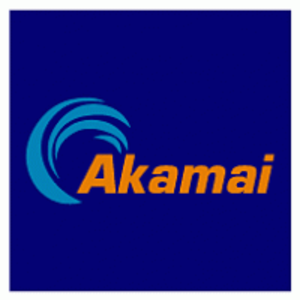I use Akamai API Security. I downloaded a report comparing WAF Akamai and WAF Azure to understand the real differences. I studied the solution to comprehend how it detects bots. For example, with Akamai API Security, the browser inspector helps me understand the bot detection capabilities.

Akamai API Security
AkamaiExternal reviews
External reviews are not included in the AWS star rating for the product.
Uses bot detection and browser inspection features to fine-tune access policies effectively
What is our primary use case?
What is most valuable?
I enabled the anomaly detection to understand the solution better. I configured the policies and created exclusions for some bots. For example, when I read and inspected the user agent data, I found that the Axion bot request was blocked by the browser inspector. In this case, I created an exclusion for the user agent Axion. I enabled the anomaly detection to study and understand the solution.
What needs improvement?
More features would be beneficial.
For how long have I used the solution?
I have used it for one year.
What do I think about the stability of the solution?
I have not experienced any stability issues. My experience has been good, and it is an excellent WAF solution.
How are customer service and support?
The support from Akamai API Security is good. The employment and support are of excellent quality.
How would you rate customer service and support?
Positive
What's my experience with pricing, setup cost, and licensing?
It is not expensive. It is practical to use and represents an excellent solution.
Which other solutions did I evaluate?
The difference includes web application and API solutions.
What other advice do I have?
I received a report and downloaded it, but I did not read the entire document. I do not have complete knowledge to answer this question at this moment. My overall review rating for Akamai API Security is 10 out of 10.
Its very good
Amazing for clearing cache
Excellent API authentication support but needs better analytics and reporting
What is our primary use case?
My primary use case was to identify PII and financial information exposed over APIs, focusing on accidental exposures or poorly constructed APIs.
What is most valuable?
I conducted a proof of concept for four months to identify PII and financial information exposed through APIs. Primarily, the API part is effective. I have been using Akamai AppMyWAF. The tool's API authentication, tokenization, and enhanced scalability and performance are valuable features. Akamai's support is impeccable, and its plug-and-play features are helpful.
What needs improvement?
The challenge I found was with contextualization and how analytics are generated. Reports were sent in a raw format without proper analytics. There was no mechanism to identify which APIs will always have PII information, such as those with PCI data. Tuning to skip known APIs wasn't available.
For how long have I used the solution?
I used the tool for a pilot project, but the subsequent proof of concept was not conducted.
What do I think about the stability of the solution?
Performance and scalability are handled well, posing no problem.
What do I think about the scalability of the solution?
From a traffic load perspective, I find the tool is always better in terms of scalability and performance.
How are customer service and support?
The support from Akamai is impeccable. It is expensive but one of the best.
How would you rate customer service and support?
Negative
Which solution did I use previously and why did I switch?
How was the initial setup?
The solution is not difficult to set up. It's a plug-and-play add-on, making it simpler for organizations already using Akamai WAF.
What about the implementation team?
Support from Akamai was consistent, with a dedicated technical account manager from their side.
What's my experience with pricing, setup cost, and licensing?
I mentioned that support from Akamai is expensive yet it is worth it.
Which other solutions did I evaluate?
I explored API security from a multiple domain approach with different tools.
What other advice do I have?
Based on my last assessment, I would rate the solution four out of ten.
Good option to extend existing global webservice to China
Extending global web presnese to China
The solution protects APIs from DDoS attacks, but it should use machine learning and API throttling together
What is our primary use case?
We use Akamai API Security to protect our APIs from any DDoS attacks.
What is most valuable?
API throttling is the most valuable feature of Akamai API Security.
What needs improvement?
It would be beneficial to use machine learning and API throttling together to identify how the APIs are called and whether it's coming from the right person or the wrong person. Akamai is developing that type of feature called URL protection, which is a mixture of API throttling and machine learning. Before blocking everything, this feature would check and first block requests coming from a hosting provider with a bad reputation.
For how long have I used the solution?
I have been using Akamai API Security since 2017.
What do I think about the stability of the solution?
Akamai API Security is a stable solution.
What do I think about the scalability of the solution?
At least 25 to 30 users are using Akamai API Security in our organization.
How was the initial setup?
The solution’s initial setup is easy.
What's my experience with pricing, setup cost, and licensing?
We have a limit to the number of APIs we can use inside a bundle, and we have to pay extra if we exceed that limit.
What other advice do I have?
Users can use Akamai API Security depending on their use cases. Akamai API Security has simple features, and it's not very complicated.
Overall, I rate Akamai API Security a seven out of ten.